Abstract
A group of 113 women and 73 men with periarthritis of the shoulder have been studied in detail. Electromyography showed 4 patients with neuralgic amyotrophy who had been referred for the shoulder study but were excluded on this basis. Nerve conduction studies showed little difference between the periarthritic group and a control group, apart from some reduction in amplitude and potential, and in women a suggestion of an increased latency. Duration of the action potential was equal. 6 patients had an undoubtedly long latency compatible with median nerve compression. Degenerative changes were found in the glenohumeral joints in 6-9%. Degenerative changes were found at the acromioclavicular joints in 31% of the men and 44% of the women. Calcification was found around 11 of the shoulder joints. There was frequently a previous history of 'rheumatism' before the episode of periarthritis. In one-third of the women 'nonspecific rheumatism' had occurred. Cervicobrachial pain and a previous episode of shoulder pain had occurred more often in the women. Arthrography was performed in 7 patients and there was a reduction in volume of material that could be injected in only one patient. There was obliteration of the axillary fold in that patient, and a torn capsule in a patient who had previously been manipulated. Lateral cervical spine x-rays were compared with films from an epidemiological survey. The disc space/vertebral body height ratio was taken, overcoming the magnification effects shown by technical alterations in the method of taking films. Good intra- and interobserver correlation was found for this ratio, but not for the width of the canal. There was no difference in the disc/body ratio between the periarthritic and control group in the upper cervical region. In the C5/6 and C6/7 intervertebral discs there was evidence of more disc degeneration in the periarthritic group. The differences from the control group were not great because of the high incidence of disc space narrowing and osteophytosis after the age of 45 years in the general population.
Full text
PDF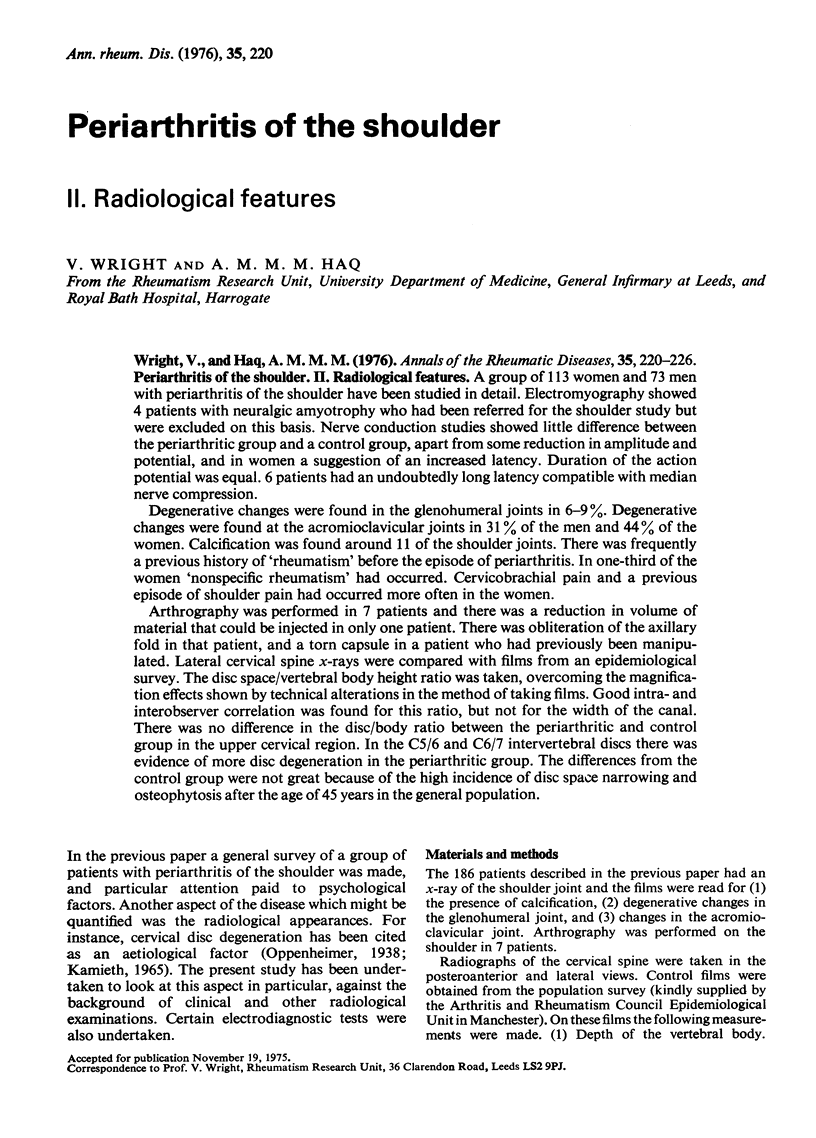
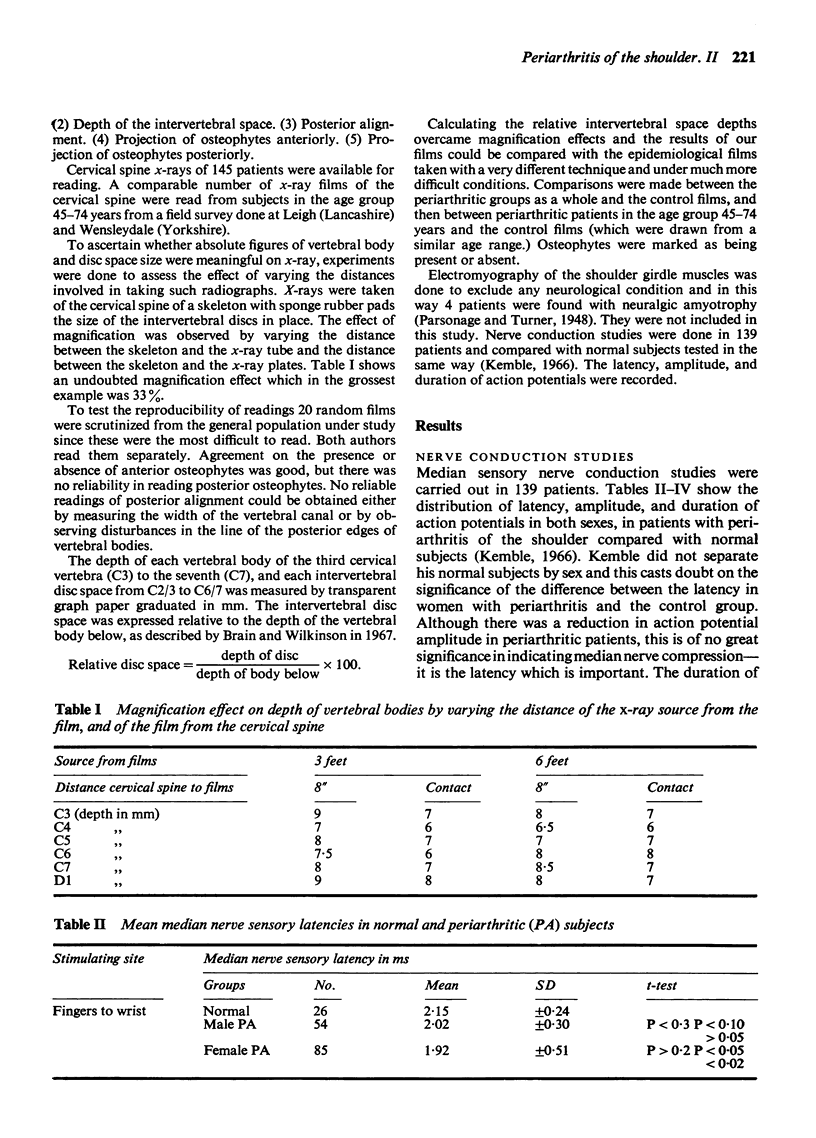
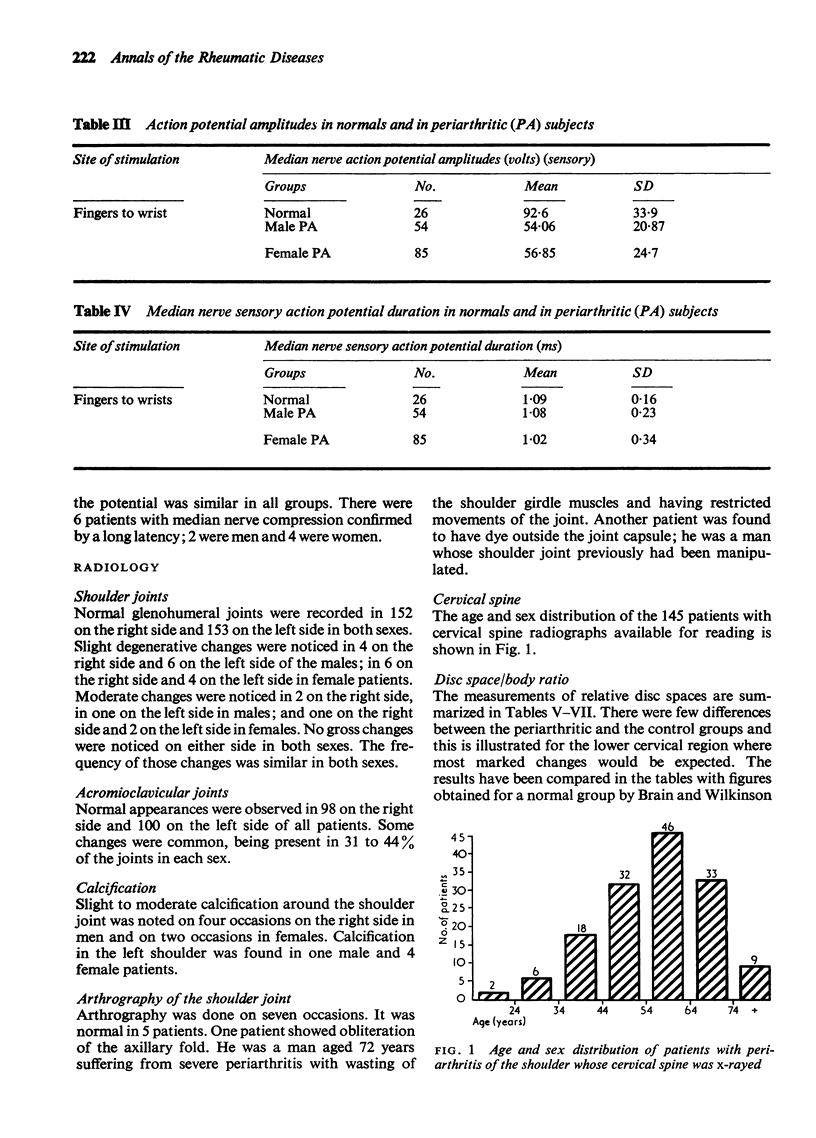
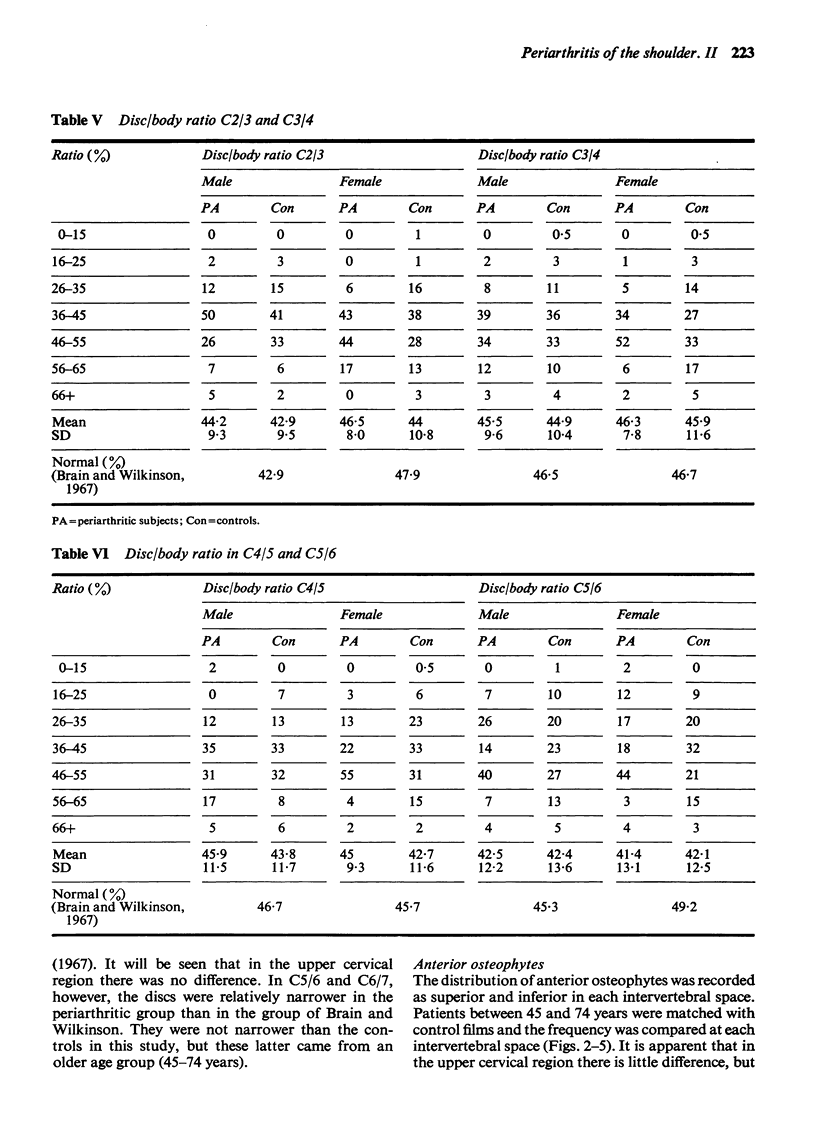
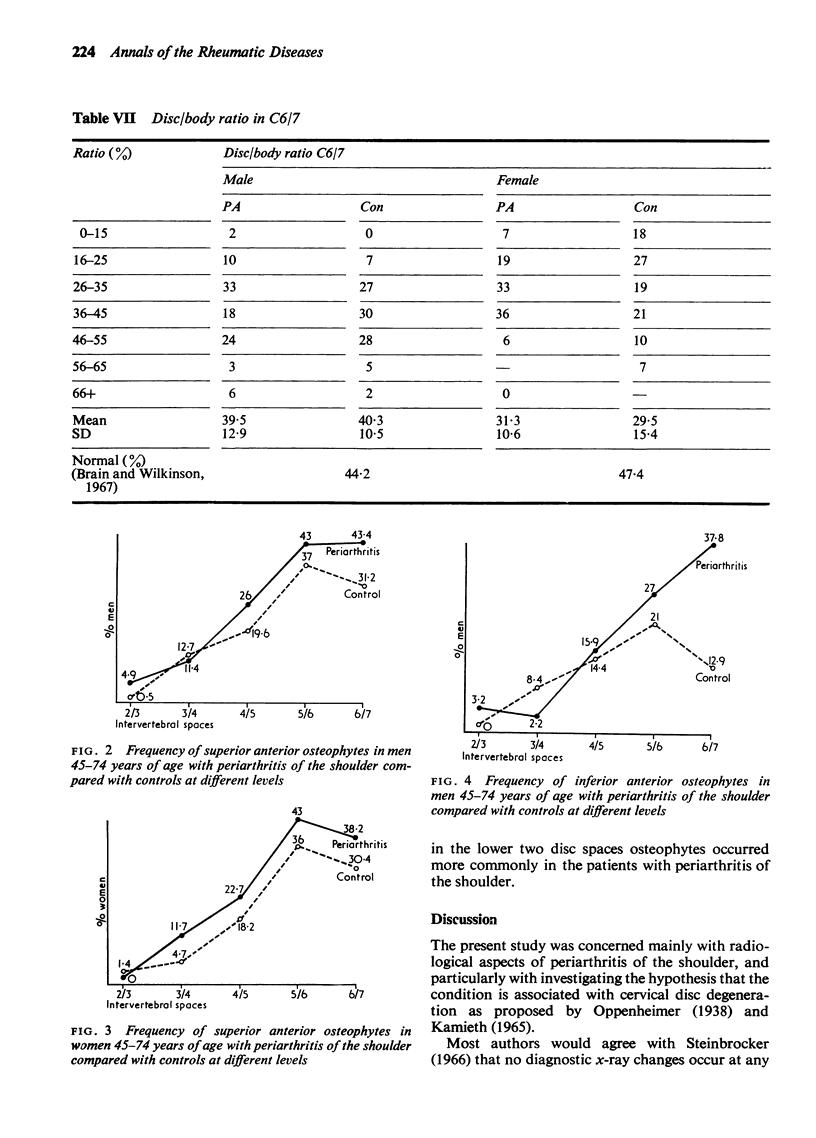
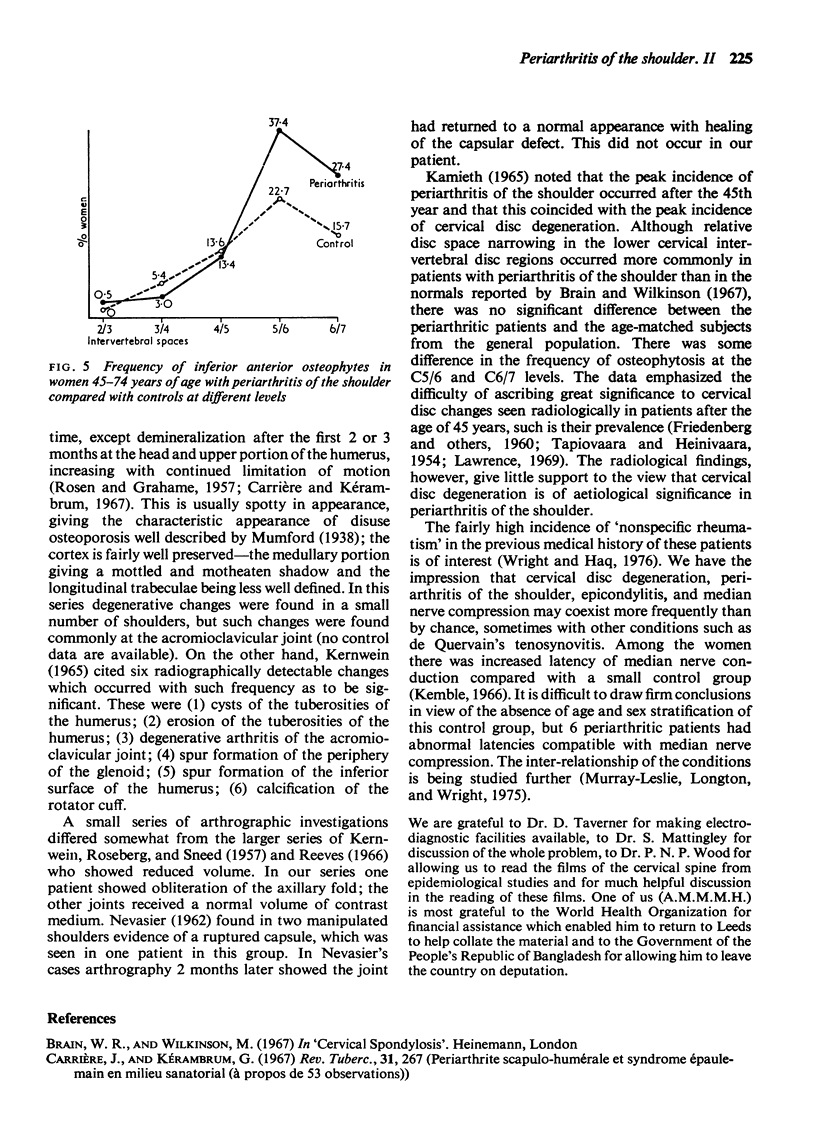
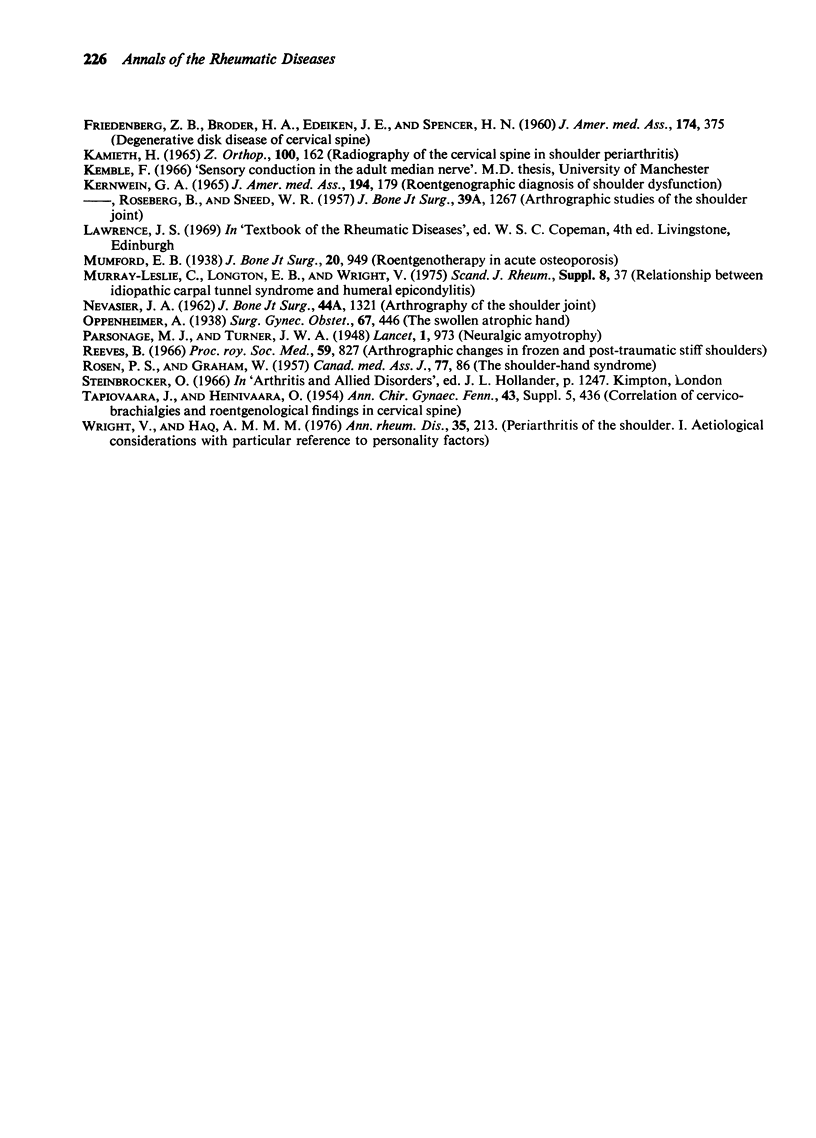
Selected References
These references are in PubMed. This may not be the complete list of references from this article.
- Carrière J., Kérambrun G. Périarthrite scapulo-humérale et syndrome épaule-main en milieu sanatorial. (A propos de 53 observations) Rev Tuberc Pneumol (Paris) 1967 Apr-May;31(3):267–276. [PubMed] [Google Scholar]
- FRIEDENBERG Z. B., BRODER H. A., EDEIKEN J. E., SPENCER H. N. Degenerative disk disease of cervical spine. Clinical and roentgenographic study. JAMA. 1960 Sep 24;174:375–380. doi: 10.1001/jama.1960.03030040029008. [DOI] [PubMed] [Google Scholar]
- KERNWEIN G. A., ROSEBERG B., SNEED W. R., Jr Arthrographic studies of the shoulder joint. J Bone Joint Surg Am. 1957 Dec;39-A(6):1267–1279. [PubMed] [Google Scholar]
- Kamieth H. Röntgenbefunde der Halswirbelsäule und der Schulter bei der Periarthritis humeroscapularis und ihre Einordnung in die Pathogenese dieser Erkrankung. Z Orthop Ihre Grenzgeb. 1965 Jul;100(2):162–174. [PubMed] [Google Scholar]
- ROSEN P. S., GRAHAM W. The shoulder-hand syndrome: historical review with observations on seventy-three patients. Can Med Assoc J. 1957 Jul 15;77(2):86–91. [PMC free article] [PubMed] [Google Scholar]
- Reeves B. Arthrographic changes in frozen and post-traumatic stiff shoulders. Proc R Soc Med. 1966 Sep;59(9):827–830. doi: 10.1177/003591576605900910. [DOI] [PMC free article] [PubMed] [Google Scholar]
- Wright V., Haq A. M. Periarthritis of the shoulder. I. Aetiological considerations with particular reference to personality factors. Ann Rheum Dis. 1976 Jun;35(3):213–219. doi: 10.1136/ard.35.3.213. [DOI] [PMC free article] [PubMed] [Google Scholar]


